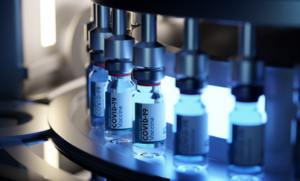Packaging tablets is integral to your supply chain at pharmacies and drug manufacturers. Selecting appropriate packaging ensures safe and accurate drug distribution to patients.
 Bottles and blister packs are often utilised for liquid medication dosages. In contrast, bottles and blister packs help protect solid pills against external influences and are made of glass or plastic.
Bottles and blister packs are often utilised for liquid medication dosages. In contrast, bottles and blister packs help protect solid pills against external influences and are made of glass or plastic.
Cost
Medicines come in all sorts of bottles that vie for consumers’ attention – pharmacies, homes or bathrooms where they store essential pills.
The cost of tablet bottle packaging varies based on product type and desired quality level. Blister packs tend to be the most cost-effective solution when manufacturing tablets for smaller package counts; however, proper labelling must accompany this form of packaging, and it must arrive intact at consumer doorsteps.
Packaging material choice also considerably impacts its performance as a container, such as a cost and oxygen sensitivity of drug formulations. Polyethylene (PE), the most frequently used bottle material, may not be ideal when dealing with oxygen-sensitive compounds; polypropylene (PP), however, offers greater versatility for such formulations and can come in different sizes to best meet each application need.
Blister packs are among the most widely chosen tablet bottle packaging options due to their single-use nature and superior protection, protecting from moisture, light and oxygen while protecting from spillage or accidental crushing during transit.
Blister packs are often the most cost-effective solution, providing products with optimal protection while being significantly less expensive to produce than their bottle counterparts. Blisters use much less material, potentially saving on material costs; additionally, they’re lighter, which aids logistical efficiency. Furthermore, strip packs are becoming an attractive, sustainable solution as their recyclable properties mean they consume 30-40% fewer materials.
Durability
Pharmaceutical companies rely on durable packaging materials such as glass bottles or blister packs to protect tablets from the elements during transport, keeping their delivery safe. As a result, the longevity of tablet bottle packaging materials can play an integral role in their operations.
A blister pack is an effective way to safeguard tablets during transport. It separates them into individual compartments and protects them with its lidded seal of aluminium foil or plastic film and its paperboard back shielding them from weather elements while protecting them from crushing. It keeps tablets safe during their journey.
Strip packs made of aluminium-PE laminated film and paperboard can offer a more environmentally-friendly way of storing tablets, using up to 90% fewer materials than their blister counterparts and thus significantly decreasing their environmental footprint.
Pill bottles are typically constructed of hardy plastic or strong glass materials that can withstand daily use in humid environments and come in various sizes and colours to suit various purposes, such as chewable medicines or capsules. While lightweight and cost-effective, these containers may crack or shatter over time.
Functionality
Dependent on the product, proper packaging can help limit exposure to light, oxygen and moisture, vital in maintaining drug stability. Using plastic, an aluminium film, or paper packaging will keep your product safe from its environment and handling and storage strain.
The three most prevalent tablet packaging formats include bottles, blister packs and strip packs – the latter providing excellent UV rays, heat and moisture protection for its products inside.
Blisters are widely respected for their durability, which helps prevent contamination of tablets and capsules they contain; many pharmaceutical companies still opt for using glass bottles as primary packaging for liquid medications.
Consideration should also be given to the size and shape of your product when selecting the ideal packaging solution for your brand. For example, a smaller bottle allows for more frequent refills, which helps cut costs while increasing shelf life.
Smart bottles could aid medication adherence by reminding users when to take their dose and alerting caregivers of missed ones. According to one recent study, patients using such devices had 24% greater adherence than those without.
Safety
Pharmaceutical packaging must protect medication from various hazards, including sunlight exposure, air and moisture intrusion. It is essential as exposure can alter its stability and potentially diminish effectiveness.
Blister packs are an effective and cost-efficient tablet packaging option that protects tablets against light, moisture and oxygen exposure and protects them from breakage.
Bottles offer another means for storing pills and can be combined with blister packs to provide accessible transportation and storage solutions. Lightweight and shatter-resistant, bottles simplify shipping and transport; however, their permeability to oxygen and some liquids makes them unsuitable for specific drug formulations.
Most bottles are constructed from polyethylene (PE), an oxygen-permeable plastic that readily absorbs chemicals. Antioxidants in many drug formulations may corrode into or absorb this plastic, reducing the potency and shelf life of medications containing them.